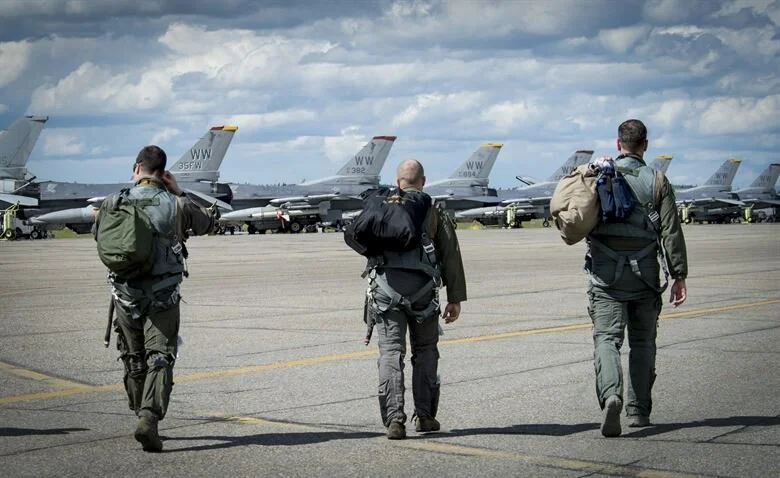Drawing on a universe of science fiction franchises including The Expanse, Star Wars, Star Trek, Ender’s Game, Starship Troopers, Dune, Earthseed, The Murderbot Diaries, and many more, a wonderful array of authors, who are strategic thinkers in their own right, offer fresh perspectives in 35 chapters that span 6 major themes: leadership and command; military strategy and decision making; ethics, culture, and diversity; cooperation, competition, and conflict; the human relationship with technology; and toxic leaders.
Data Analytics in the Combatant Command: Improving the Approach to Decision-Making
To complete their missions, combatant commanders will, out of necessity, leverage data as a weapon system as it constitutes the basis of information development within the commander's decision space. With new sensors, the amount of collected data continues to climb, making more data available for transformation into actionable information supporting decision-making. Given the enormous volume of data that presently exists and the supply of trained analysts within a command, the commander and staff are assumed to have the capability to effectively employ data analytics to support the planning and execution of operations within the area of responsibility decisively. The perception is partially true.
Command in a Time of COVID
Commanders should and will be judged by how they lead their units through this crisis. They can stand on the sidelines and await more complete medical information and higher headquarter guidance, or they can respond proactively to the crisis and develop a local plan to combat the virus. The path the commander takes is likely to leave a lasting mark on their unit.
U.S. Army Mission Command at a Crossroads
The fundamental challenge will be how the organization balances increasing possibilities of control within a culture of trust. Without transparent institutional action to counteract these forces, unit-level leaders will continue to face the burden alone, reducing trust in the philosophy and by extension, operational effectiveness.
#Reviewing Bayly's War
The popular conception of World War I centers on hellish trench warfare and all its horrors. While it is undeniable that the war was won and lost on the Western Front, the lines stretching back across the Atlantic that brought men and desperately needed supplies into the theater of operations played an essential part in Allied victory.
Military Command as Moral Prudence
Officers need not be saints, but they must be people who are willing to confront the unavoidable ethical questions that are running through the decisions they make and the example that they set. An officer’s education and practical experience give her an instinct for prudence, but like other virtues that may be partly innate or existing it should be cultivated. Military officers should also teach prudence to those they instruct, lead, and advise. This is even more critical in times like these, when brinkmanship and imprudence amounting to impudence seem to be the orders of the day.
Six Convergent Paths to Victory: #Reviewing Corps Commanders of the Bulge
World War II is not without its exemplars of leadership across all levels of war. Volumes of text have examined the command styles of Eisenhower, Patton, Macarthur, and Bradley at the theater and field army command levels. Likewise, historians have tracked the experiences of companies of infantry soldiers and their non-commissioned officers, lieutenants, and captains. In between is the Army corps, and Dr. Harold R. Winton’s Corps Commanders of the Bulge, which covers with great detail the training, development, and battlefield execution of the six integral operational-level leaders who shaped the path to victory in this pivotal battle of World War II.
The Language of Mission Command and the Necessity of an Historical Approach
It is time to drag out the old historical concepts and put them into a contemporary framework in a readable fashion. History is unbeatable in teaching lessons. The U.S. Army needs to understand the struggle the Prussian/German Army went through to introduce this superior command culture to avoid the old mistakes and repeat the successes. Only then is there a chance in the future that once American officers will face the enemy not with a superior budget, gadgets, fire power, or electronics but with a superior mind and command culture. The language of mission command is like the command culture itself: brief, uncompromising, focused, and ruthless.
#Leadership Through Example
Battalion and squadron commanders have a profound influence across our military. In the late 1990s, before assuming command of a squadron, I sought advice from then-Colonel Don Holder. The “free, non-binding advice” he sent me proved invaluable. Since that time I learned more about command at the battalion level by observing effective commanders in combat and in training. What follows, printed with his permission, is a revised version of what now Lieutenant General, retired Holder sent me.
#Reviewing “U.S. Naval Institute On Naval Command”
Naval Command is clearly aimed at officers who aspire to or are preparing to assume command. However, it can also serve as a valuable resource for junior officers who wish to better understand the lens through which their commanding officers view their own responsibilities. In several instances, Cutler distilled lengthy contributions down to tightly presented summaries of the salient details. This skillful editing yields a 194-page book that is neither intimidating in scope nor size. While Naval Command can be read cover to cover, it may be best used in the traditional “wheel book” sense — a professional reference manual that an officer can return to time and again for insight and guidance.











